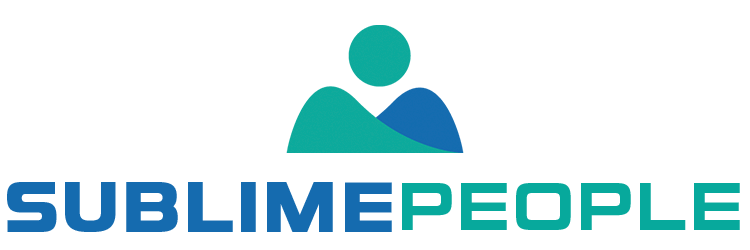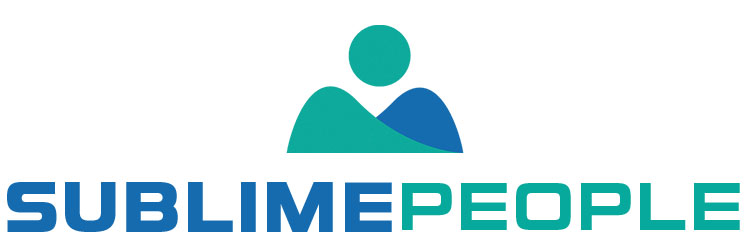In recent years, recruitment analytics has become an increasingly important tool for businesses to measure and improve their recruitment process. But what exactly is recruitment analytics?
In this blog post, we’ll define recruitment analytics, identify different data that can be used for analysis, and explore the benefits of using this type of data to improve your recruiting efforts. By understanding recruitment analytics, you can take your business’ recruiting process to the next level!
In this Article:
What is recruitment analytics?
Recruitment analytics is a data-driven approach to tracking and analyzing recruitment processes. It focuses on the collection of recruiting metrics, historical recruiting data, job boards, job descriptions, and other relevant sources to gain actionable insights into improving your recruitment funnel.
Recruiting teams use this type of software to determine which channels are producing the most and least qualified applicants, what types of candidates are dropping off during the recruiting process, and how well hiring managers are following up with potential hires.

Examples
There are many ways the recruitment industry uses recruitment analytics to improve the recruiting process. Here are some examples:
- Optimizing job descriptions: Analyzing job descriptions and finding areas where they could be improved, such as using more effective keywords or phrasing.
- Tracking hiring managers’ performance: Measuring the performance of individual hiring managers to identify potential training needs or other areas for improvement.
- Evaluating recruiting teams’ strategies: Analyzing the recruiting team’s strategies over time to identify areas where they could be improved.
- Evaluating recruitment technology vendors: Looking at data from different recruitment technology vendors and assessing which ones offer the best services for your needs.
- Understanding candidate drop-off: Analyzing how candidates move through the recruiting funnel and identifying where in the process they are dropping off.
- Identifying key metrics: Analyzing data to identify which recruitment metrics are most important for your team’s success, such as time-to-fill or candidate quality.
- Generating actionable insights: Using predictive analytics and machine learning to uncover insights that can help inform recruiting strategies.
Types of recruitment analytics
Recruiting analytics can refer to a variety of types of data-driven insights about performing recruitment processes and teams. The primary recruitment analytics include applicant tracking, cost per hire, time to hire, quality of hire, source effectiveness, diversity metrics, and employee retention.
Applicant tracking analytics
It uses data from applicant management systems to track where applicants are in the hiring process and how many applicants are at each stage. This type of analytics allows recruiters to understand the efficiency of their recruitment process by evaluating which stages are taking longer than expected and what sources or job boards yield higher-quality candidates.
Cost per-hire analysis
Cost per-hire analysis measures the total costs associated with filling an open position divided by the number of hires made during that period. It considers both direct and indirect costs associated with recruitment – such as advertising costs, recruiting agency fees, background checks, and assessment tests – to determine which sourcing strategies generate better returns on investment for employers.
Time to hire
Time to hire is one of the most crucial metrics. It reflects an employer’s ability to fill its openings quickly without sacrificing quality. This metric tracks the average time it takes for a recruiter to identify a candidate for a role, schedule interviews with them, and make an offer letter. By understanding this metric, employers can identify ways to increase their speed-to-hire while ensuring they don’t compromise on hiring quality.
Quality of hire
Quality of hire is another important metric used in recruitment analytics. It helps employers measure how well they’re selecting candidates for their roles in terms of skill set and cultural fit. Employers track whether new hires meet expectations set forth before recruitment by measuring factors such as job performance ratings from previous employment, skill assessment scores obtained during tests or interview processes, and feedback from team members about how well someone integrates into the company culture post-onboarding.
Diversity metrics
Diversity metrics in recruitment analytics help employers understand their demographics and assess whether their recruitment processes are achieving fair outcomes regarding gender, ethnicity, age, sexual orientation, and other factors. Employers can use this data to identify potential diversity gaps in their workforce or areas of improvement in their recruitment processes.
Employee retention
Employee retention is another crucial metric for employers to measure to understand the success of their recruitment efforts. This metric helps employers identify which job boards or hiring channels lead to a higher number of successful hires that stay longer and perform better than those from other sources. Employers can also use employee retention metrics to identify potential areas for improvement in their team, onboarding processes, and company culture.
How do I use analytics for recruitment?
If you want to use analytics in your recruitment process, there are a few things you’ll need to know. Following these steps, you can ensure that you’re using analytics effectively in your recruitment efforts.
Recruitment analytics software
Recruitment analytics software can help organizations track key recruiting metrics, such as time-to-fill, cost-per-hire, applicant quality, and more. It can also provide actionable insights into how to optimize the recruiting process.
Applicant tracking system
An Applicant Tracking System (ATS) is software used by recruiters to track, filter, and prioritize job applicants. By leveraging the data in an ATS, organizations can gain valuable insights into their recruitment process.
Recruiting metrics
By analyzing recruiting metrics, such as source-of-hire and time-to-fill, organizations can gain valuable insights into their recruitment process. This can help them identify areas for improvement and ensure that they are sourcing the best candidates quickly.
Job boards
Job boards are a great way to reach out to passive candidates and spread awareness about job openings. Recruiting managers can leverage data from these job boards to gain insights into where the best candidates are coming from and which channels yield the greatest results.
Predictive Analytics in Recruitment
Predictive analytics uses historical data to identify patterns in success rates, across recruitment solutions and job descriptions, to determine the best way to source quality candidates for roles. This data can also predict which candidates are most likely to succeed in a role.
Why is recruitment analytics important?
In a world where data is increasingly available and necessary for making informed decisions, recruitment analytics has emerged as an important tool for understanding the talent landscape.
Improving diversity
Diversity recruitment is often challenging on a large scale. However, you can track and improve the effectiveness of the diversity initiative based on the information that has been collected. Using recruiting software can give you access to data such as the percentage of diverse applicants and their success rates, helping you assess and improve recruitment efforts.
Making the process more efficient
Analytical data can improve recruitment and retention strategies. By looking at employee information and candidate data, it is possible to identify hiring bottlenecks effectively. It is also able to reduce the hiring costs of your staff by giving you more money to try new ideas.
Improving your quality of hire
By using data analytics in making data-driven hiring decisions, you can determine the most successful hire. Doing this can make your hiring process more competitive and improve your employee experience and retention rates.
Tracking performance
Recruitment analysis will show how well you monitor key metrics for recruitment. Gain insights on performing recruiters and improve your workflow. It will be useful to compare the results with other industry benchmarks, so we can see where our performance is going.
Helps to identify the most effective recruitment channels
Recruitment analytics can help to identify which channels are the most effective at generating quality candidates. This information allocates more resources to the most effective channels and reduces spending time on less effective ones. You can use the information to improve the effectiveness of recruitment campaigns.
Helps to identify which candidate characteristics are most predictive of success
Recruitment analytics can also help to identify which candidate characteristics are most predictive of success in a role. This can help recruiters to narrow their search and identify the most suitable candidates more quickly.
Helps to benchmark against other companies
Recruitment analytics can also help companies benchmark their performance against other companies. This can help them identify which companies have the best recruitment strategies and use those insights to improve their performance.
Best practices for using recruitment analytics
We all know that data is important in making business decisions. But when it comes to recruitment, data can be especially helpful in understanding what strategies are working (and which ones aren’t). This is where recruitment analytics come in. Below are some best practices for using recruitment analytics to help you make the most of your data.

Choose the right metrics to track
It’s important to select the right metrics to track and measure for recruitment analytics to be successful. Factors such as time-to-fill, cost-per-hire, applicant quality, offer acceptance rate and onboarding success rate are important metrics that should be tracked to get a more accurate understanding of your recruiting process.
Collect relevant data
Collect data from a variety of sources, including job boards, applicant tracking systems, recruitment technology vendors, and historical recruitment data. This will allow you to get a complete picture of the recruitment process and identify any weaknesses in your approach that need addressing. A recruiting analytics solution can help you collect and analyze this data.
Look for actionable insights
You should use analytics as a tool to identify areas for improvement and help you decide. To do this, it is important to look beyond the data and dig deep into the root cause of any issues. This will allow you to create targeted solutions that address the specific problems your business is facing.
Visualize your data
Visualizing data points can be a great way to make complex recruitment metrics more meaningful. Utilize charts and graphs to display your key recruitment analytics metrics in an easy-to-understand format that allows you to draw actionable insights from the information quickly.
Put the data into perspective
Once you’ve collected and analyzed the data, put it into perspective by considering additional factors such as job descriptions, candidate experience, and hiring managers. This will help you get a better understanding of how your recruitment analytics fit into the big picture and make more informed decisions about recruitment process improvements.
Recognize data limitations
Always keep in mind the limitations of recruitment analytics. While it can provide useful insights, it’s important to remember that data analysis is only as good as the data you have available. Therefore, use recruitment analytics as a guide rather than a definitive answer to your recruitment challenges.
A word from SublimePeople
Recruitment analytics or recruitment analysis is a powerful tool for the recruiting team to understand and improve your recruiting efforts. By understanding the different recruitment analytics and how to apply them, you can make more informed decisions about your talent acquisition process. Recruiters who can use data-driven insights to guide their decision-making will be better equipped to find the best candidates for their organization and improve the overall quality of their workforce.
SublimePeople will help you make fast and reliable decisions by using theory, experience, and data to ensure that you get the best talent for your organization. Contact us now to get more information!




